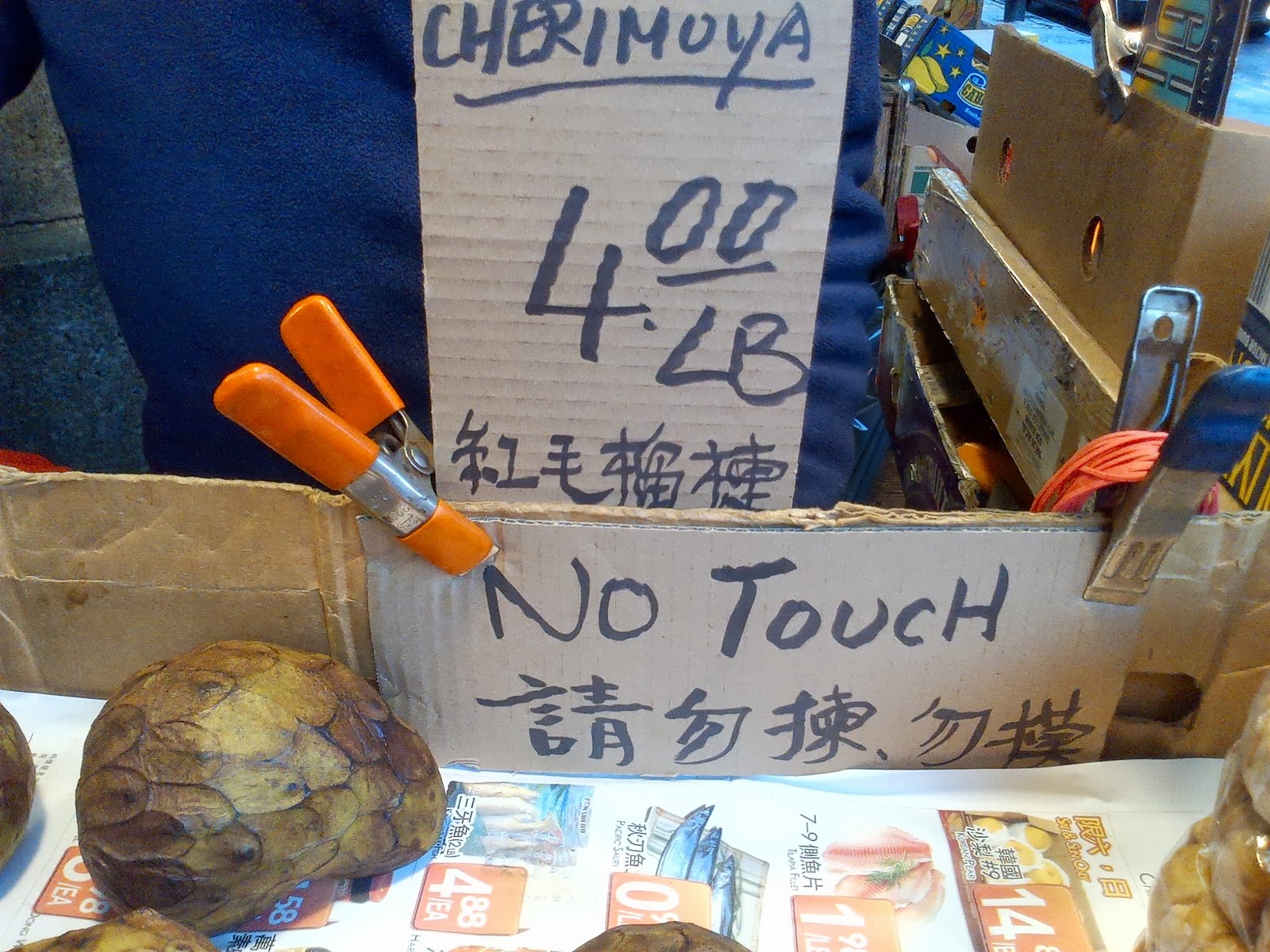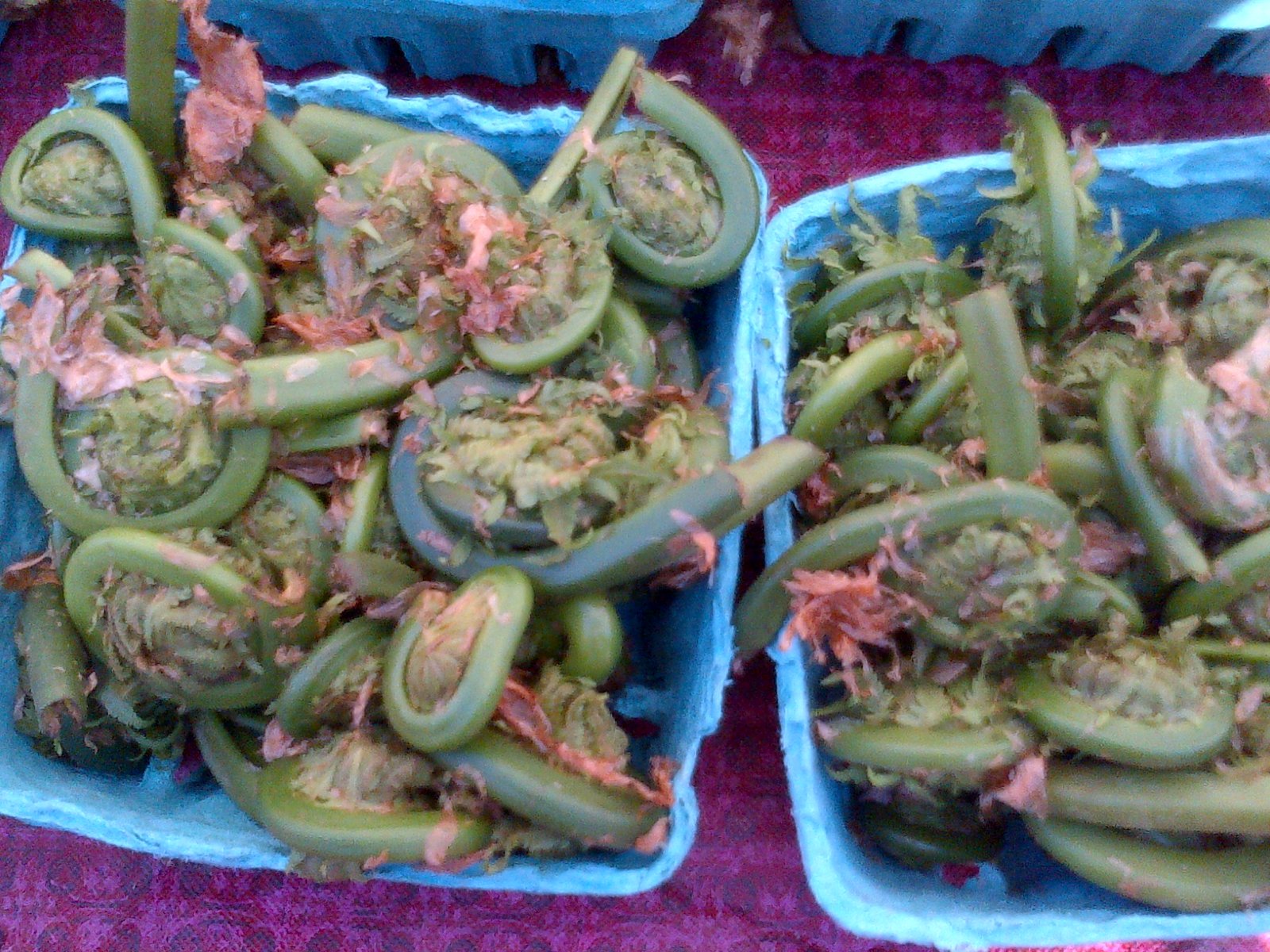Beneath the tough, scaly, lizardy exterior lies a tender interior. A smooth, sweet and creamy interior, to be exact. I'm writing, of course, of armored tropical fruits.
I'm thinking of guanabana, which I passed up in Brooklyn when I had empty pockets and some sticker shock. I'm thinking also of Brazilian beauties like the pinha that I am determined to see in person. Ah, someday.
So when I encountered these scaly, lumpy fruits in Chinatown over this past weekend, I was powerfully motivated to buy them. My old pal, the cherimoya.
My interest in what you could call the lizardy fruits basically began with the cherimoya I first had at the fabled La Marqueta, a market built under the elevated Metro-North Railroad tracks in East Harlem. I had specifically gone to La Marqueta to discover unknown, delicious produce. I was not disappointed. The cherimoyas I purchased were magically custardy, as befitted another name by which they are known, custard apple. They tasted like a combination of several tropical fruits - banana + pineapple, most prominently, with hints of other fruits (maybe a very ripe Comice pear?) rounding out the flavor.
It's been years since I've had one. It was time.
The cherimoya in Chinatown looked considerably further along the ripeness continuum than, say, the photo in the Wikipedia entry.
 |
| Photo courtesy of Hannes Grobe, Wikipedia |
Still, I was game. The Chinatown cherimoyas were a little riper than I would have liked, but I asked for one "for tomorrow, not today," and got one of the firmer ones. (Cherimoya can be a little grainy if not ripe and even a little astringent if far from ripe. I've been told to aim for the feeling of a banana at the degree of ripeness you like.)
I knew I needed to treat the cherimoya, especially if it was very ripe, extremely gently. This fruit stand wasn't going to provide padded sleeves for their high-strung fruit as some gourmet stores do. That was fine with me - I love the range, immediacy and price of the Chinatown produce experience, so I am willing to forego some niceties. I wrapped my new cherimoya in a T shirt.
When I got home, I dumped my bags and practically ran into the kitchen.
Here's what the Wikipedia photo of a cut cherimoya looks like:
 |
| Photo courtesy Hannes Grobe, Wikipedia
And here's what mine looked like:
|
That is, until it looked like this:
Wow, that was good.

















